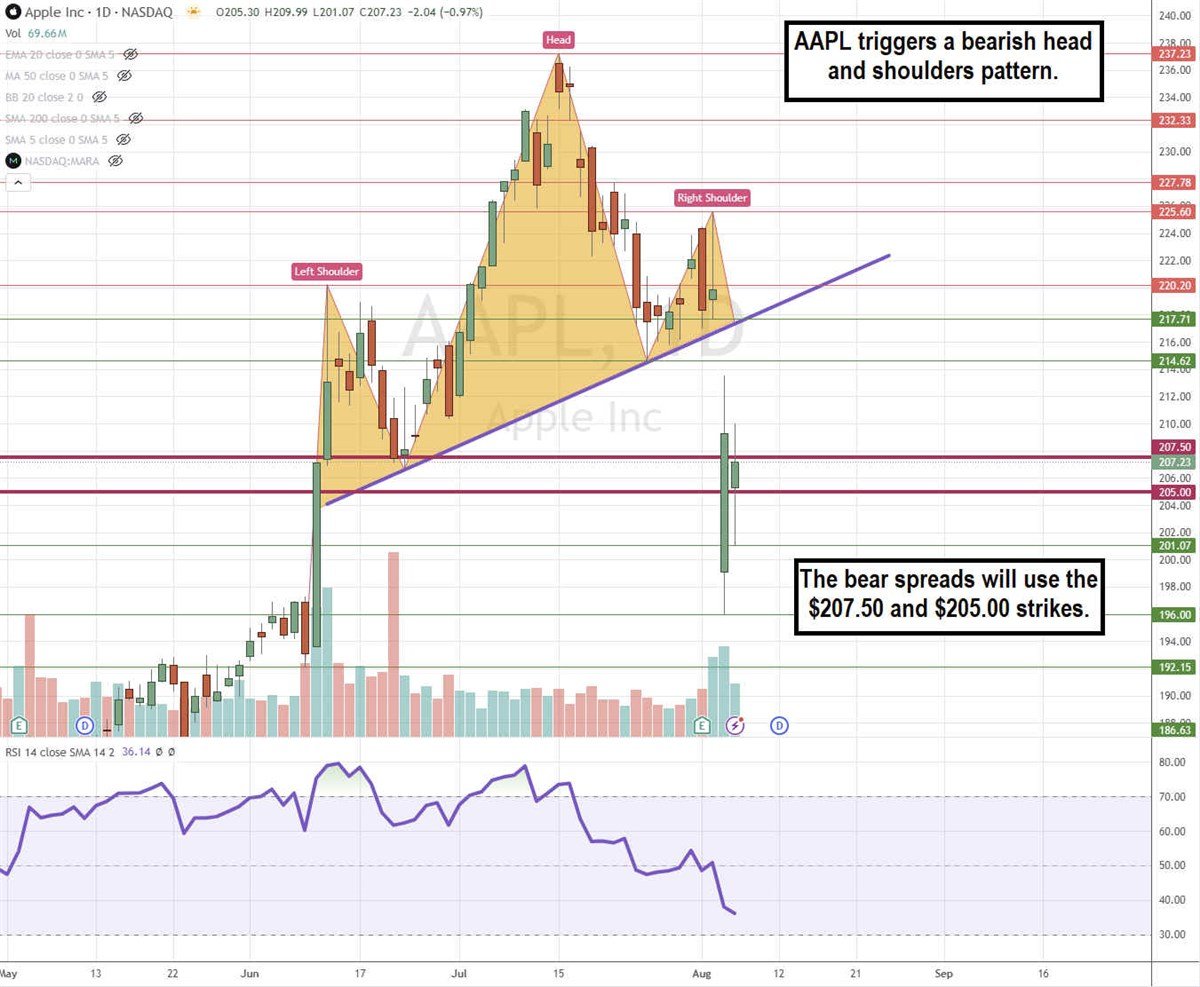The abrupt sell-off in the markets has traders concerned about not only giving up long gains but potentially missing out on short-selling opportunities in a falling market. Short-selling is a risky endeavor that can present unlimited losses since stocks can theoretically rise indefinitely while they can only fall to zero.
When you are looking to take a bearish short position on an underlying stock, options spread strategies can lower your risk. The bear put debit spread and the bear call credit spread are two strategies that can be used in place of actually short-selling the underlying stock. Both strategies can reap profits on falling prices while limiting or even capping losses if the underlying stock rises against your position.
What Is a Bear Put Debit Spread?
This trade is also referred to as a put spread, debit put spread, and put debit spread. It’s a multi-leg strategy consisting of two puts:
- Buy 1 put at a higher strike price
- Short 1 put at a lower strike price
Both puts can be out-of-the-money (OTM), or the long put can be at-the-money (ATM). The spread between the long put and short put determines the maximum price potential. Wider spreads and deeper OTM strikes can result in higher profit potential with a smaller probability. The maximum loss is contained in the cost of the trade.
What Is a Bear Call Credit Spread?
This trade is also referred to as a bear call spread or a call credit spread. This strategy pays you a credit or your max profit up front in the form of a credit. It’s comprised of two call options:
- Sell 1 call at a lower strike price
- Buy 1 call at a higher strike price
Like the previous strategy, higher profits can be attained with a further OTM and wider spread call options.
Using Bear Spreads Example: Apple, Inc.
Let's take a bearish stance on a magnificent 7 stock in the computer and technology sector, Apple Inc. NASDAQ: AAPL, as an example to show how these strategies work.
The AAPL daily candlestick chart below illustrates a bearish head and shoulders pattern. This pattern is comprised of three peaks. The left shoulder peaked at $220.20 before falling back down to the $207.22 neckline. The second and highest peak occurred at $237.23 before falling to the $214.62 neckline. The final peak hit $225.50 before falling to and through the $217.71 neckline. AAPL gapped under the neckline and bottomed at $196.00 before staging a rally back to the $209.10 price level. Assuming the head and shoulders pattern will follow through to the downside, we’ll apply each strategy using the $207.50 and $205.00 strike prices with August 16, 2024, expiration for the options, which is 10 days out.

Strategy #1: Bear Put Debit Spread
A bear put debit spread would consist of the following:
- Buy 1 AAPL 207.50 Put for $3.63
- Sell 1 AAPL 205.00 Put for $2.78
The cost of the trade is 85 cents ($3.63 minus $2.78). If AAPL falls under $205 by expiration, then the maximum profit of $165 for a 94% return would be achieved. The breakeven price would be $206.63. The max loss on the trade is capped at $85.
Strategy #2: Bear Call Credit Spread
A bear call credit spread would consist of the following:
- Sell 1 AAPL 205.00 Call for $7.03
- Buy 1 AAPL 207.50 Call for $5.40
This trade provides you with a credit of $1.63 ($7.03 minus $5.40). If AAPL falls under $205 by expiration, then the max profit of $163 for an 87% return would be achieved. The breakeven price would be $206.63. The max loss on the trade is capped at $87.
Executing Bear Spreads Strategies
Most online brokers have a function that enables you to execute your spread trades with one click after selecting your strikes. While a spread trade consists of two options positions, the execution should be simultaneous. If your broker or trading app platform doesn't offer the one-click simultaneous execution of both trades, then you'll have to perform them manually. If you have a browser-based execution page, it helps to have two browser pages up to click the trades as close to each other as possible to avoid slippage.
Maximizing Profits and Managing Risk
Both the bear put debit spread and bear call credit spread offer traders strategic alternatives to short-selling in a falling or bear market. These options strategies allow you to profit from a stock's decline while capping potential losses, making them less risky than traditional short-selling. By selecting appropriate strike prices and expiration dates, traders can effectively manage their risk and reward. Whether you prefer to pay upfront with a bear put debit spread or receive a credit with a bear call credit spread, these tools provide flexibility and control in bearish market conditions.
Start Your Research with MarketBeat
Want to learn more about options trading? Click here to access MarketBeat's extensive educational materials and market-tracking features.
Before you consider Apple, you'll want to hear this.
MarketBeat keeps track of Wall Street's top-rated and best performing research analysts and the stocks they recommend to their clients on a daily basis. MarketBeat has identified the five stocks that top analysts are quietly whispering to their clients to buy now before the broader market catches on... and Apple wasn't on the list.
While Apple currently has a Moderate Buy rating among analysts, top-rated analysts believe these five stocks are better buys.
View The Five Stocks Here
Discover the 10 Best High-Yield Dividend Stocks for 2025 and secure reliable income in uncertain markets. Download the report now to identify top dividend payers and avoid common yield traps.
Get This Free Report
Like this article? Share it with a colleague.
Link copied to clipboard.